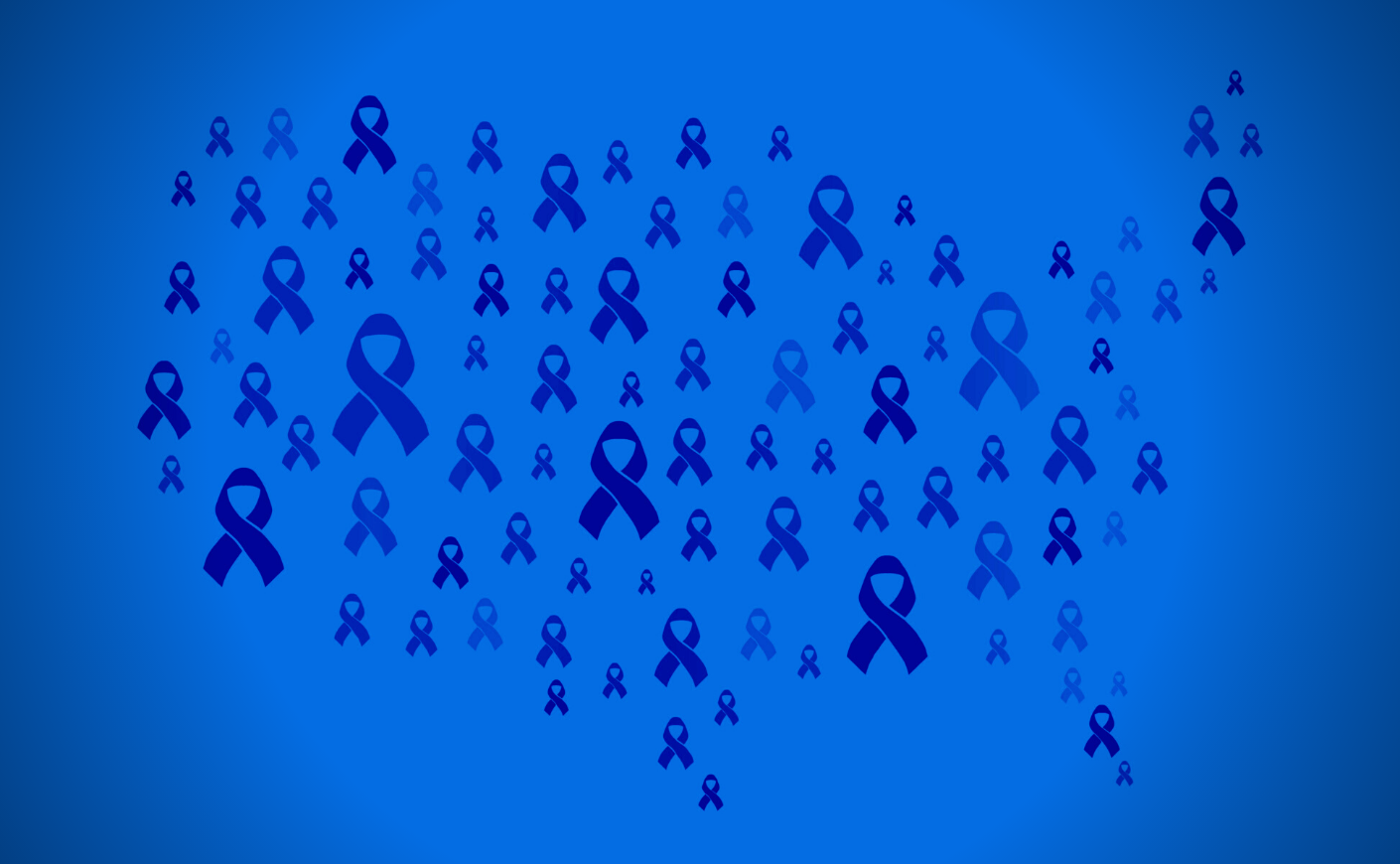As you may know, March is colorectal cancer awareness month. Cancer awareness is foundational to Katie Couric Media since Katie has been fighting for cancer awareness and research for decades and she battled her own cancer diagnosis last year. You probably recall her first husband Jay died of colon cancer, which is considered to be under the umbrella of colorectal cancer, and after, Katie famously had a colonoscopy live on the TODAY Show to encourage people to get screened. She became the “screen queen” and studies showed that her segment led to a temporary increase in colon cancer screenings. Unfortunately, colorectal cancer is still on the rise, even though it’s one of the easier cancers to prevent because of the accuracy of colonoscopies. Part of the problem is probably that we all think that cancer won’t ever happen to us. But it can, and Katie is living proof of that.
The good news is there are numerous screening options available, so you should talk to your doctor about which test is right for you. If you’re at average risk for colon cancer, there are at-home, non-invasive options like Cologuard that offer a solution for patient populations in communities where screening rates are low, whether due to geographic, personal, or systemic barriers.
If you need some convincing to get screened, take a look at how colon cancer affects your home state. We’ve compiled a list of the states with the highest colorectal cancer rates, according to the CDC.
The American Cancer Society reports that in the 1970s and 1980s, the highest rates of colorectal cancer were found in the Northeast; back then, the South enjoyed the lowest rates. In ensuing decades, that data has shifted: “Today it is highest in parts of the South, Midwest, and Appalachia and lowest in the West and Northeast.”
As usual, many factors converge to create regional trends. According to the report, these shifting rates are a tangle of race, class, and changing cultural attitudes toward risk factors: “This shift is consistent with the racial and socioeconomic crossover in disease burden that occurred during the latter half of the 20th century because of changes in dietary and smoking patterns.” Plus, proximity to care varies in different states.
The CDC states that there are other aspects at play that are out of our control: “Differences in genetics, hormones, environmental exposures, and other factors can lead to differences in risk among different groups of people.”
Since rates vary according to so many different influences, it’s important to remain careful even if your state’s stats are fairly low. And you probably don’t need to pack your bags and move if your state’s rate is high. This is all meant to remind you that colorectal cancer affects a lot of people. Adults aged 45 to 75 should all be routinely screened, though you should talk to your doctor about earlier screenings if you’re at an increased risk.
One note: The comprehensive CDC data of state comparisons excludes Nevada. If you want some good info on cancer in the Silver State, the American Cancer Society has you covered.
Colorectal Cancer Rates For Every U.S. State
| State | Reported Cases of Colorectal Cancer Per 100,000 People |
| Mississippi | 46.7 |
| Louisiana | 46.6 |
| Arkansas | 46.3 |
| Kentucky | 46.3 |
| West Virginia | 43.2 |
| Alabama | 41.7 |
| Iowa | 41.3 |
| Kansas | 40.0 |
| New Jersey | 39.9 |
| South Dakota | 39.9 |
| Oklahoma | 39.0 |
| Puerto Rico | 39.0 |
| Georgia | 38.9 |
| Pennsylvania | 38.5 |
| Alaska | 38.5 |
| Illinois | 38.4 |
| Tennessee | 38.2 |
| North Dakota | 38.1 |
| Ohio | 37.8 |
| Nebraska | 37.7 |
| Missouri | 37.7 |
| Texas | 37.4 |
| Hawaii | 37.4 |
| Wyoming | 36.9 |
| New York | 36.8 |
| Indiana | 36.6 |
| New Hampshire | 36.5 |
| Maine | 36.2 |
| South Carolina | 36.1 |
| Michigan | 35.9 |
| Wisconsin | 35.7 |
| Maryland | 35.4 |
| Montana | 35.3 |
| Florida | 34.5 |
| Idaho | 34.2 |
| Virginia | 33.9 |
| Minnesota | 33.9 |
| California | 33.8 |
| North Carolina | 33.6 |
| Rhode Island | 33.4 |
| Delaware | 33.4 |
| Washington | 33.1 |
| District of Columbia | 32.9 |
| Connecticut | 32.6 |
| Vermont | 32.2 |
| Oregon | 32.0 |
| Massachusetts | 31.4 |
| Colorado | 31.1 |
| New Mexico | 30.5 |
| Arizona | 29.2 |
| Utah | 28.5 |









